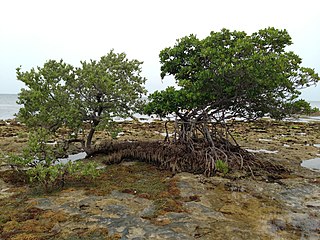Mangrove: Difference between revisions
From Indian River Lagoon Project
mNo edit summary |
mNo edit summary |
||
| Line 1: | Line 1: | ||
<div class="irlbody"><!-- Body Content Div --> | <div class="irlbody"><!-- Body Content Div --> | ||
<div class="irlheader"><!-- Header Div --> | <div class="irlheader"><!-- Header Div --> | ||
{{IRL header}} | {{IRL header bow}} | ||
<p class="irlsubtitle">Three species of mangroves are found in Florida: the red mangrove, black mangrove, and white mangrove.</p> | <p class="irlsubtitle">Three species of mangroves are found in Florida: the red mangrove, black mangrove, and white mangrove.</p> | ||
</div><!-- End Header Div --> | </div><!-- End Header Div --> | ||
| Line 46: | Line 46: | ||
</div><!-- END References div --> | </div><!-- END References div --> | ||
</div><!-- END Content Bottom Div --> | </div><!-- END Content Bottom Div --> | ||
<div class="irlfooter">{{IRL footer}}</div><!-- Footer div --> | <div class="irlfooter">{{IRL footer bow}}</div><!-- Footer div --> | ||
</div><!-- END Body Content div --> | </div><!-- END Body Content div --> | ||
[[Category:Flora]] | [[Category:Flora]] | ||
Revision as of 19:48, October 30, 2019
Three species of mangroves are found in Florida: the red mangrove, black mangrove, and white mangrove.
About
Typically: red mangroves grow along the water's edge; black mangroves grow on slightly higher elevations than the red mangrove; and white mangroves grow upland from the red and black. Mangroves grow in saltwater and in areas frequently flooded by saltwater. Mangroves provide protected habitat, breeding grounds, and nursery areas to many land and marine animals. Mangroves also provide shoreline protection from wind, waves, and erosion.



